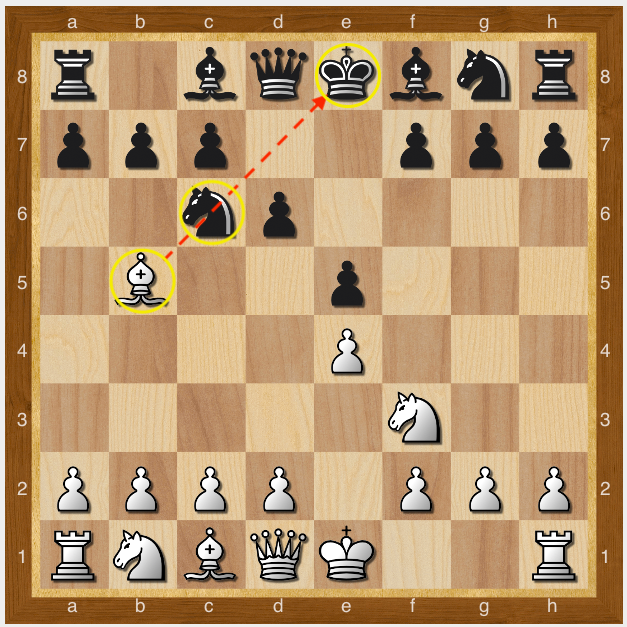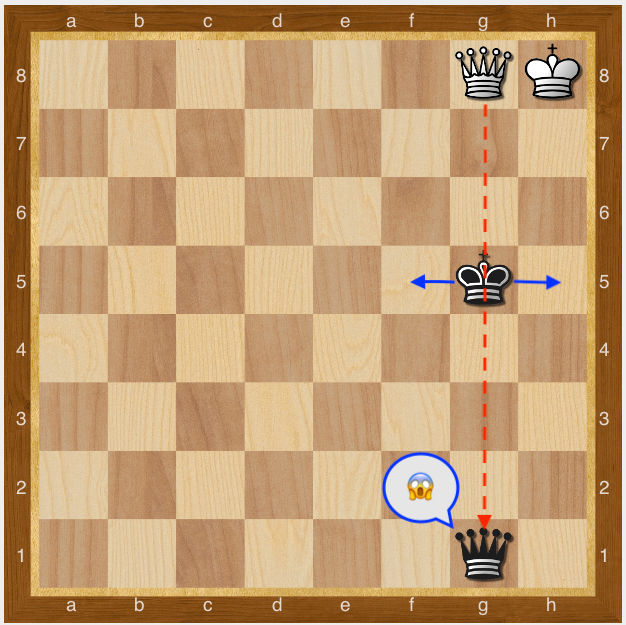Ouch! Using Pins and Skewers
- Robert Ek
- Feb 13, 2018
- 3 min read
In our tactical chess playbook we should have "fork" attacks, "decoys" and "deflections". Next, we are going to look at "pins" and "skewers".
Like "decoys" and "deflections", pins and skewers take a similar concept and run it two different ways.
A pin is when we trap a pieces onto a square because the piece is protecting a more valuable piece behind it. Pins are valuable to lock our opponent's pieces in place, keeping them from going on the offensive or, better yet, keeping them from getting in the way of our attack.
A skewer is the same idea in reverse. We have a valuable piece between my attacker and another less valuable piece. My opponent must move the more valuable piece out of the way, leaving my real target defenseless.
We can look at a pin first.
Locking Pieces Down with a Pin
Going back and looking at our example of a Ruy Lopez (Spanish Game) opening for white, we can quickly get to a good setup to show off a pin.
1. e4 e5, 2. Nf3 d6, 3. Bb5+ Nc6

A pretty standard setup for an early part of the game. White gets in a swift check with the light squared bishop and Black runs a block with the Knight on c6 while improving its development. The knight's adventures are going to be limited as it will need to wait until another piece captures the bishop on b5, or relieves the knight of its duty protecting the king. So, black's knight is going to be stuck on c6 for a while.
Black could follow up with Bd7, or Black could attempt to chase the bishop away by playing a6, in which case White's light squared bishop can easily step back to a4 and maintain its pin on the knight just as effectively. Either way, it is unlikely that White would trade its very active bishop for Black's compromised knight, so neither side is in a real rush.
That is the essence of the Pin. Now let's flip it around and look at the skewer.
Being a Bond Villain 101
There is a scene in the movie "Goldfinger" where our hero, Bond, James Bond, is locked down on a metal slab. A glowing hot laser is slowly inching its way up to Bond, threatening to cut our hero in half, and he says to the villain,
"You don't expect me to talk, do you?"
To which the villain replies,
"No, Mr. Bond. I expect you to die."
At this point the villain leaves the room assuming everything is going to plan. Spoiler - everything does not go according to plan and Bond escapes to make the villain's live miserable.
I keep thinking of this line when I see a successful skewer (or when I pull one off myself).
A skewer is the opposite of a pin. You remember that with a pin we are trying to lock a piece in place because it is protecting a more important target. With a skewer we want to threaten an important piece knowing that it will need to dive out of the way, leaving our real target exposed!
For a good example of a skewer - we can pull up our decoy example from the Decoy and Deflection discussion we've already had. Let's look at this setup again after White has drawn the Black Queen from her guard post watching the menacing White pawn.
1. ... Qxg1, 2.g8=Q+

So, Black's King has to dive out of the way of the oncoming "Pain Train" of White's Queen coming down the tracks, leaving its Queen to her fate.
The Black King is not the real target ... at least not yet. With Black's Queen out of the game, White can start working on a checkmate and the worst that can happen here is a draw.
Now, we can identify Pins and Skewers along with Forks, Decoys and Deflections. We will look at how these tactics are used in the future, but for now, pat yourself on the back - good job!




























Comments